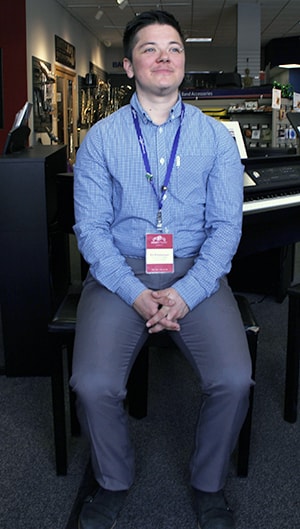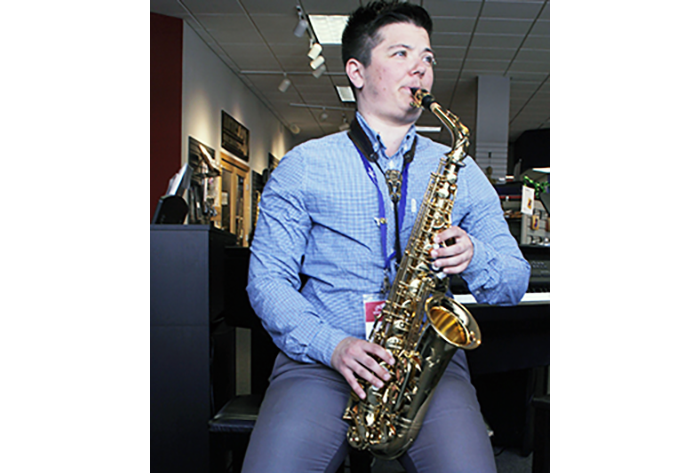Almost every instrument requires some repetitive motion and therefore can lead to injury over time. Even young players can injure themselves over the course of just a few months. The good news is that there is one sure-fire way to protect your child from strain and injury, and that is to maintain good posture!
The Elements of Good Posture When Playing an Instrument
Good playing posture goes from head to toe. The guiding principles are:
- Maintain a solid frame, that way bones can do their work, easing the burden on muscles.
- Stay relaxed but engaged – not tensed up, but also not limp.
A great way for a student to develop proper posture is to work quite literally from the “bottom” up.

Musician’s Positioning on the Chair
Musicians in good posture sit forward in their chairs. Exactly how far forward is a matter of comfort and body type. Some musicians are poised right at the chair’s edge, but most have their weight centered a little farther back.
Chairs Have Straight Backs—So Should Musicians
Your child should sit with their chest and shoulders raised to a straight, yet comfortable position. A comfortably straight spine allows hours of play. Stiffness, however, is a recipe for fatigue.
Down Below, Flat Feet Will Go
Keep feet comfortably at rest on the floor. They do not have to remain frozen like a statue, but having your child regularly resettling into “rest feet” position is helpful in maintaining consistently good posture.
“Coat Hanger” Shoulders
To the greatest extent the instrument allows, music students should keep their shoulders level while playing. To help visualize this, some musicians like to imagine a coat hanger with a tank top on it: it can sway a little, but if it tilts consistently or sways too far, the shirt falls to the floor.
Keep a Level Head
Remember that the head should face “straight ahead”. Dropping the chin or “turtle-necking” forward are easy, but unhealthy, habits for young musicians to fall into. Encourage your child to make a mental note to regularly check in on how their head and neck are positioned
Instruments Do Not Charge for Travel: Bring It to You
Once proper posture is attained, new musicians should fit the instrument into the frame they have created, rather than bending and twisting themselves to fit around the instrument. The temptation to lean forward and “meet the instrument halfway” is very strong, but it puts a tremendous strain on the back and neck. Musicians at every level should regularly practice assuming good posture without their instruments, and then gently bring their instruments to their poised, relaxed bodies.
Special Encouragement for Violin and Viola Players
Playing the violin or viola poses special challenges for posture. Learning to hold these instruments while staying true to the principles of good playing posture is not easy! Encourage your child to be patient with the process and to speak up immediately if they ever feel discomfort or strain.
The Payoff of Proper Instrument Positioning: Lifelong Playing
Music is one of a very special few human pursuits that a person can engage in as actively at age 79 as they did at age nine! By helping your child learn and reinforcing the fundamentals of proper posture, you can ensure that a lifetime of satisfaction awaits them.




